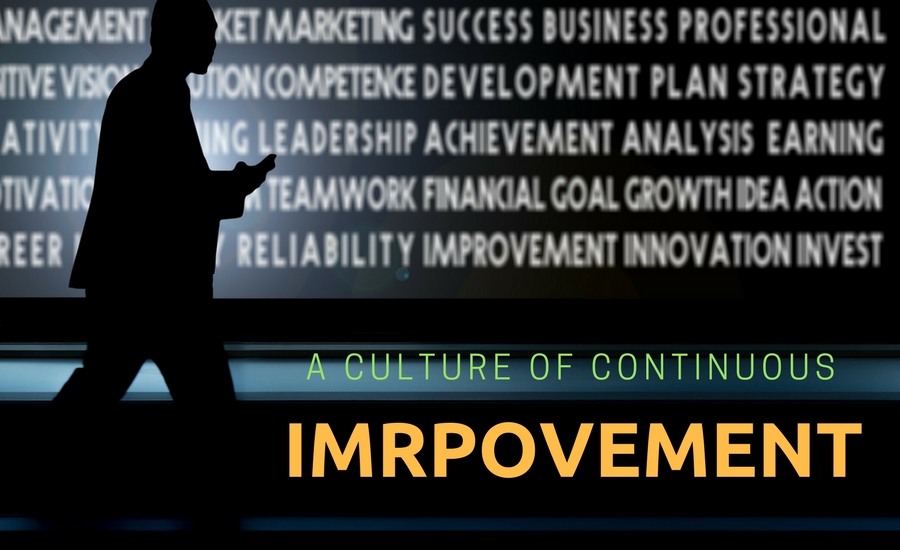Of course everyone wants really great performance in their business, but not everyone is willing to take the time to really understand how to design the business for that: what it looks like, what practices and procedures support that, and what gets in the way of a business reaching the levels of success you really want. The evidence for this is just look around you. Talk to the many owners at the conferences, and really listen. It doesn’t take long to see just how few businesses reach levels of success that allow the owners the freedom to really enjoy being in business while they are still young enough to do so.
In speaking with or working in these successful companies, I find some commonality in their business practices, and that’s what I want to present here. You don’t need all of these practices to be successful, just a few will do. You do need to have more practices supporting great performance than you have detracting from it. Obviously the more of these you employ, the easier it will be for you.
The bottom line: either have what you feel is a successful business or you don’t.
If you have it, you have a successful business where people are:
- Learning and growing in their skills and abilities
- Thriving
- Expanding in their accountabilities
- Expanding in their ownership
- Becoming leaders to their peers
- Achieving breakthroughs in working smarter, not harder.
Again, if you have it, you undoubtedly have a company that is:
- Profitable
- Growing.
- Becoming easier to manage year after year
If you don’t, your experience likely looks like this:
- Stressful
- Accountability is missing as you watch things slipping through the cracks
- Frustration grows because you can’t be everywhere to catch everything
- You know your teams should be more productive, you just can’t figure out how to get them as motivated as you are
- Trying to stay on top of all the problems is exhausting
- This is not what you had in mind when you decided to go into business for yourself.
Good news! There are solutions for all this.
A Vision for the Business that Inspires Everyone
The first step is to recognize that the real power is in your employees. Take care of them and they will take care of you. Give them the resources to thrive at work, and watch your productivity go up dramatically, with profits following.
Have a vision for the business that not only inspires you, it also inspires, educates, and focuses the employees you already have, and also the employees you really want to attract. Have the communication be strong, bold, and like no other. Have your vision communication show up continuously, from the ad copy for new applicants, all through the hiring process, and all through the coaching and training of your existing personnel. Communicate it always. It should be simple, easy to say, and easy to hear.
Know that these "power practices" are cumulative, each one stands on the shoulders of the last one. Individually they are very effective and, if all you do is a single one of them, you will still see a significant benefit. Collectively they will add huge real power to your organization, and cultivate a culture of continuous improvement.
A Culture of Continuous Improvement
To support the above, you need a business culture and environment of continuous improvement and learning. It’s the culture of your business that impacts each person’s moment-to-moment behavior. Culture is defined as what your people do when you’re NOT right there telling them what to do.
Without a culture of ongoing learning to support the kind of productivity and performance you really need and want, businesses default to owners and senior managers feeling like they must work pretty hard to keep driving and policing everyone to do the right things. It's time-consuming, stressful, and exhausting. A culture where your people embrace ongoing learning and improvements is essential to keep everyone responsive in recognizing opportunities for business development, responsive to the needs and concerns of your customers, and responsive in their ability to take ownership for driving results without your management.
Again, the practices for this start on day one, and continue through employment. Let people know from the first moment of interviewing this will be a challenge, maybe the most challenging job they have ever done. And you will offer support in the form of training, coaching, and educational empowerment. What you want them to hear is that you are going to continuously challenge them, but that you will have their back. They will have the opportunity to be very accountable, think for themselves, and demonstrate significant accomplishments. They won’t be bored. In fact, it will be an exciting and rewarding experience in which they will increase their skills and abilities to be at the leading edge of their profession.
Set up annual reviews to measure the success of each person’s training and development in terms of the accomplishments they are achieving in each of their accountabilities. Have them be accountable for their own pathway of training and development, by writing up their own plans for the coming year. Be in partnership on this, but do not do it for them. As an owner or senior manager, hold yourself to account for at least every key staff having a career path of training and development that each of them can be responsible for maintaining themselves. Commit to that. Then back it up.
When you combine the vision work of the first step with the high performance culture of continuous improvement in this second step, what you get is each person in your employ working toward a future that personally fulfills them, combined with everything they need to have a path to run on. The measure of these first two steps done well is key staff having breakthroughs in productivity. Selling more, closing more, driving better margins.
Some of the problems that come up here is some people resist change. It scares them. Some see it as a threat to their jobs, some just don’t like any change period. This kind of behavior is very damaging to a company, causing stagnation and robbing you of profitability. It persists only through a misunderstanding for what professionally functional behavior needs to look like. So let’s dive into the next step and take a look at the kind of behavior shows up in highly productive and profitable companies.
Professional Coachable Behavior
The first thing we see in very professional behavior is people are coachable. I think the best way to understand this is to look at the whole range of behaviors from expensively unworkable to highly productive and profitable:
Example 1:
Employee Response: Leave me alone, I’m fine, I want to do it my way, I’m a trained professional and I don’t need any help from you or anyone.
Reality: Typically painful to deal with, uses more energy to manage than what they give back in production
Example 2:
Employee Response: Ok, you can help me if I like where this is going and we do it my way.
Reality: Still not real coachable, probably not the person you want long term.
Example 3:
Employee Response: Sure, I’m coachable, but I don’t like it, and I will make sure you know that!
Reality: This can be disguised as resistance in the form of being passive, or the pretense of compliance.
Example 4:
Employee Response: I’m open to your suggestions and appreciate your help, support, partnership.
Reality: Not looking for help, but open when offered, where functional behavior starts.
Example 5:
Employee Response: I’m coachable – I’m completely willing to do the work, and let the coach do the coaching. I ask for coaching, I want to change self defeating behaviors that limit my success - I know I need help with a few things, can we set up a time for that?
Reality: A request for learning, they seek it, and they take it with a commitment to empower themselves and the coach with it, they create value from any help offered.
The ideal here is obviously having functional staff seeking to grow with the company that actually enjoys learning along the way. The problem is when dysfunction behavior isn’t seen and dealt with for what it is; it persists and causes a lot of damage to morale, productivity, and your profits.
Another thing we see here key staff have great time management, project management, and scheduling skills.
Impeccable Integrity / the Ability and Willingness to Give and Keep your Word
This is last step and source component for all the "power practices" is integrity. Personal and professional integrity. Without integrity, nothing works. Without the ability for your staff to give and keep their word, commitments can’t be met, projects can’t be delivered on time, contracts can’t be fulfilled, and customers can’t be taken care of the way you really need them to be. In short, running the business where the owner is the only person who is rigorously keeping their word every day is crazy and stressful.
Every owner I have ever had the privilege to work with had a commitment to overhead being paid, payroll happening on time, and contracts with customers being fulfilled. They did a great job of performing that month after month, year after year. Was it easy? No way. Did they fail a few times? Absolutely.
The Secret to Success
The secret to success: don’t stop. Keep going. Keep your eye on the prize. This is exactly what’s great about every business owner I know. They show us it’s not about how many times you fall down; it’s about how many times you get back up, recommit, and get the job done. Challenges happen every day. Being your word in the face of every day challenges is heroic. Making a commitment to do whatever it takes to the hard work that drives sales, closed work and higher margin is exactly the behavior that put every owner I ever worked with into business for themselves, and what keeps them there today.
The problem we have in our industry is that even though we have plenty of owners leading the way, demonstrating this highly functional and profitable behavior every single day, too much of the daily operations happen in a way that’s commitment-phobic. Key staff get stopped by their fear of giving their word to drive results. Why is that? Why is there so much misunderstanding around this? Some people are afraid to give their word. Some people think that’s too risky. Some think they can’t give their word to something they can’t control. Some are afraid of being fired or reprimanded if they don’t do what they said. Many are afraid of not looking good. I have heard many excuses over the years. One project manager told me it would be too stressful to give his word to how much work he would close this month….interesting…too stressful?!?
Yet everyone wants a paycheck right on time. How did we get to this place where so few have connected the dots that its commitment to results that drives paychecks? How did we miss that commitments drive everything important? I think it’s because we’re looking in the wrong place for how to motivate people. The all too common default is just pay them more, as if money is the only motivation that matters to people.
Decades of research done with millions of employees done all over the world says otherwise. Here is what we now know. For the world of business, and with regard to the actions of leading others, communication, selling, taking care of customers, working in teams, etc …success is by far more a function of emotional intelligence than mere IQ. People lacking functional integrity and emotional intelligence feel threatened in highly productive environments. It’s very uncomfortable and scary for them. They lack the ability to meet every day risks and challenges and prefer the comfort and security of operating well within their comfort zone. On the other hand, people with higher EQ welcome challenge; in fact the ideal environment for highly functional employees is one that offers risks, challenges, and a lot of autonomy. Therefore, the foundational key to all our Power Practices and highly productive behavior is how emotionally well each person is. How they feel about themselves, their self confidence, self worth, and self esteem is the key to their personal integrity. The higher their integrity, the more coachable they will be. The more coachable teams are allows for an environment of learning and continuous improvement. Teams that embrace continuous improvements and learning accomplish exactly that, leading to breakthroughs in performance and productivity. When productivity goes up, profits follow




Report Abusive Comment